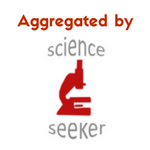On the same day that I learned the (disturbing and sad) news that a friend, a woman in her early 40s, has a pacemaker, I read that a stem cell scientist in cardiovascular medicine, at the University of California, has received a grant to develop stem cells that “could serve as a biological alternative to the electronic pacemakers that people now use to regulate heart rhythm.”
(And in another strange coincidence, pacemakers were invented in Canada, in the same building where I currently work.)
The scientist, Deborah Lieu, hopes to improve pacemaker technology using human induced pluripotent stem cells (hiPSCs). According to Dr. Lieu, there is a need to improve the technology: “There are more than 3 million patients around the [United States] who are dependent on electronic pacemakers. Each one costs about $58,000 to implant and requires follow-up surgery about every five to 10 years to change batteries.”
Her “biopacemaker” would do away with battery replacement and enable “a person’s heart to naturally adapt to a rising heart rate during activities such as exercise.” It would also benefit infants and babies who have congenital heart-rhythm dysfunction but are too small for standard pacemakers.
A little googling around shows that this technology is not novel.
But, what if we could do away with a pacemaker (biological or conventional) altogether?
Dr. Duncan Stewart, a cardiologist and the chief executive of the Ottawa Hospital Research Institute, is testing a stem cell therapy that will treat damaged tissue caused by heart attacks.
According to the Ottawa Citizen, “Stewart plans to use stem cells harvested from a patient’s blood instead of those from the bone marrow. He is also looking to compare the effectiveness of the genetically enhanced stem-cell treatment with regular stem cells and a placebo.”
If the treatment is successful and gets approved for clinical use, it will be used as “another tool in the arsenal to treat patients with massive heart damage.”
These reports offer some hope to the estimated 400,000 Canadians who suffer from heart failure — one of which is my friend. I’ll be watching further developments in this area with great interest.
Stacey Johnson
Latest posts by Stacey Johnson (see all)
- Right Turn: Can Bryan Johnson live forever? Will regenerative medicine help him do so? - October 10, 2025
- Right Turn: #pinksocks, diabetes news and other ramblings - June 24, 2025
- Right Turn: Some takeaways from Advanced Therapies Week 2025 - January 31, 2025






Thanks for your feedback Marissa!
awesome, very hopeful!